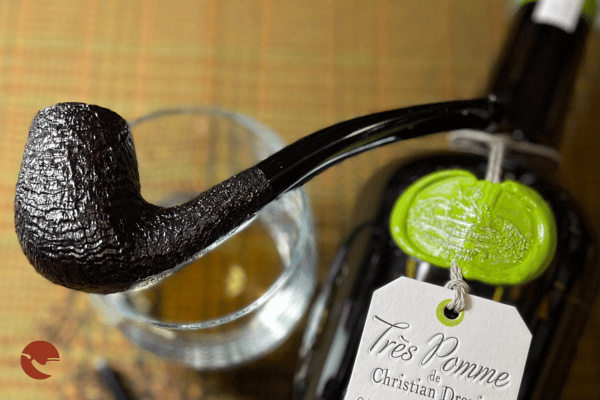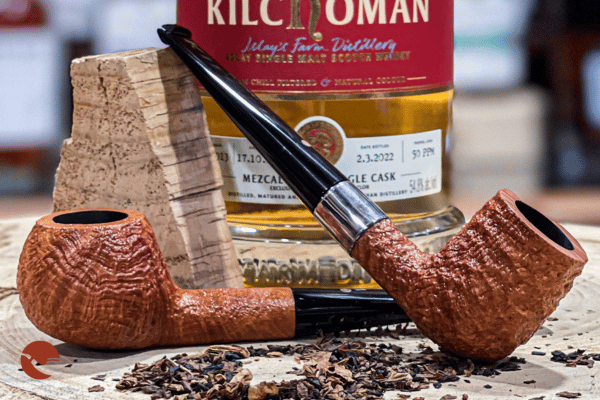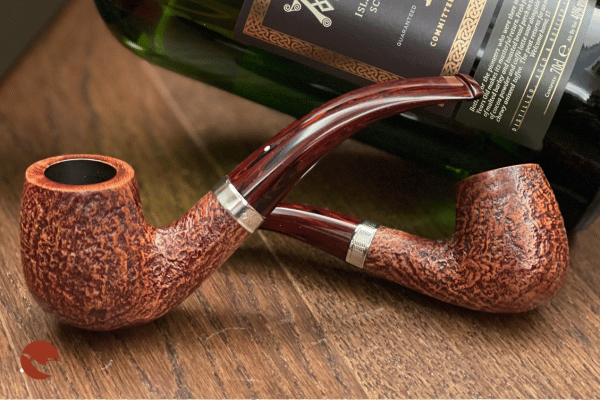The Best English Tobacco Pipes
English craftsmanship has had a huge impact on the world of tobacco pipes, rivaling that of the French.
What has always set English tobacco pipe makers apart is their strict adherence to classic shapes, meticulously refining their aesthetics to create a standard of elegance and quality.
Each English tobacco pipe brand has a distinct stylistic identity, even a Billiard can exhibit significant differences between brands.
One of the most iconic names in English tobacco pipe making is Charatan, one of the first British companies to achieve widespread success.
In this article, we will explore the history of the best English tobacco pipes, analyzing their designs and the innovations that have revolutionized the world of slow smoking.
History of English Tobacco Pipes
To tell the story of English tobacco pipes, we must start with Charatan, the first company to produce fully handcrafted tobacco pipes.
The founder, Frederick Charatan, was a Jewish-Russian immigrant who arrived in England after spending time in Vienna, then a major center for meerschaum pipe production. It was there that he trained as a tobacco pipe maker, mastering techniques he would later apply to briar pipes.
Charatan’s groundbreaking innovation came in the late 1800s, when he decided to craft tobacco pipes entirely by hand, while most manufacturers at the time relied on pre-turned bowls imported from France.
This fully artisanal approach made Charatan pipes the most expensive and prestigious of their time, reserved for the upper class.
The Birth of Dunhill
Charatan’s revolutionary approach directly inspired Alfred Dunhill, who in 1910 began producing tobacco pipes using pre-turned bowls from France. In 1917, he founded his own workshop, hiring former Charatan artisans to replicate their superior craftsmanship.
An interesting anecdote highlights Dunhill’s ambition and his perception of his tobacco pipes' value.
In the 1920s, Alfred Dunhill approached Carmignani, the only retailer of luxury smoking accessories in Rome, to sell his tobacco pipes. Carmignani was impressed by the quality but asked about the price. Dunhill boldly priced them at twice the cost of Charatan pipes, which were already the most expensive on the market.
The retailer declined, failing to see the potential of Dunhill pipes, which would later surpass all expectations, becoming an ultimate symbol of exclusivity.
By the late 1970s, Dunhill acquired Charatan, leading to the exodus of several artisans, who went on to establish new workshops, such as James Upshall and Melville, which gained moderate success.

Dunhill pipe
FASCINATED BY DUNHILL PIPES? CLICK HERE FOR THE AVAILABLE MODELS
Sasieni and the rivalry with Dunhill
Another prestigious brand was Sasieni, founded by Joel Sasieni, who for a time competed directly with Dunhill.
In the 1930s, Dunhill sued Sasieni over the use of a blue dot on the mouthpiece, which closely resembled Dunhill’s famous white dot. Over time, Sasieni’s blue dot faded to white, increasing confusion between the two brands.
Dunhill won the lawsuit, forcing Sasieni to alter its logo: in England, Sasieni adopted a two-dot marking, while in some European countries, the original blue dot remained.
Today, finding a Sasieni pipe with a single dot is an extremely rare collector’s item.
The Birth of Ashton
Another renowned brand that emerged from the Dunhill school was Ashton, founded in the 1970s by Bill Taylor, a former Dunhill craftsman. Starting as an apprentice, Taylor eventually became one of Dunhill’s most skilled tobacco pipe makers before founding his own company, specializing in high-quality sandblasted finishes.

Ashton pipes
INTERESTED IN ASHTON PIPES? CLICK HERE FOR THE AVAILABLE MODELS
The Best English Tobacco Pipe Brands
Some of the best English tobacco pipe brands include Charatan, BBB, Comoy, GBD, Orlik, Sasieni, Parker, Barling, Ashton and Dunhill, all known for their distinctive shapes and craftsmanship.
Early fully handmade Dunhill pipes featured the "ODA" stamp, where "A" indicated smooth red tobacco pipes, while "OD" certified the tobacco pipe’s artisanal craftsmanship.
In the 1930s, Dunhill introduced the OD Custom, tobacco pipes that were personally designed by customers, followed by the Dunhill Collector series, which were handmade and stamped with "HT" or "HW" markings.
Although Dunhill primarily produced semi-finished tobacco pipes, these handcrafted series were the heart of the brand.
Dunhill’s success was built on two key factors that set it apart from the competition:
- Briar quality: Dunhill selected only the finest briar blocks, ensuring exceptional tobacco pipes.
- Precision craftmanship: their tobacco pieps were constructed with unparalleled accuracy for the time.
Innovations of the English tobacco pipe
Beyond the flawless modeling of classic English tobacco pipes, Dunhill is credited with two major innovations that forever changed tobacco pipe craftsmanship: sandblasting and the Army Mounted system.
Many sources attribute the invention of sandblasting to Alfred Dunhill, while others claim he simply perfected an existing technique.
This finishing not only enhanced the tobacco pipes’ aesthetics but also made them more heat-resistant, allowing for a cooler, more enjoyable smoke.

Sandblasted Dunhill pipes
Another major English innovation was the Army Mounted system, designed to solve a common issue faced by British soldiers during World War I.
On the battlefield, the tenon of traditional tobacco pipe mouthpiece often broke due to harsh conditions.
The Army Mounted provided a solution: the mouthpiece was tapered and conical, fitting directly into the shank without a tenon.
This allowed soldiers to quickly disassemble the tobacco pipe and store it in their pockets, preventing breakage during combat.
